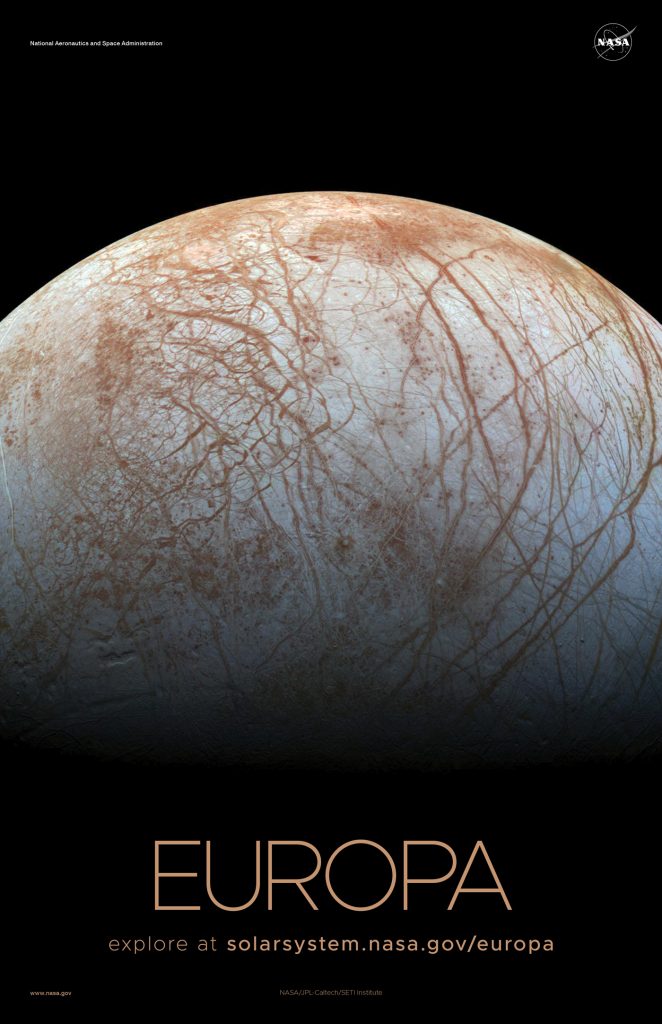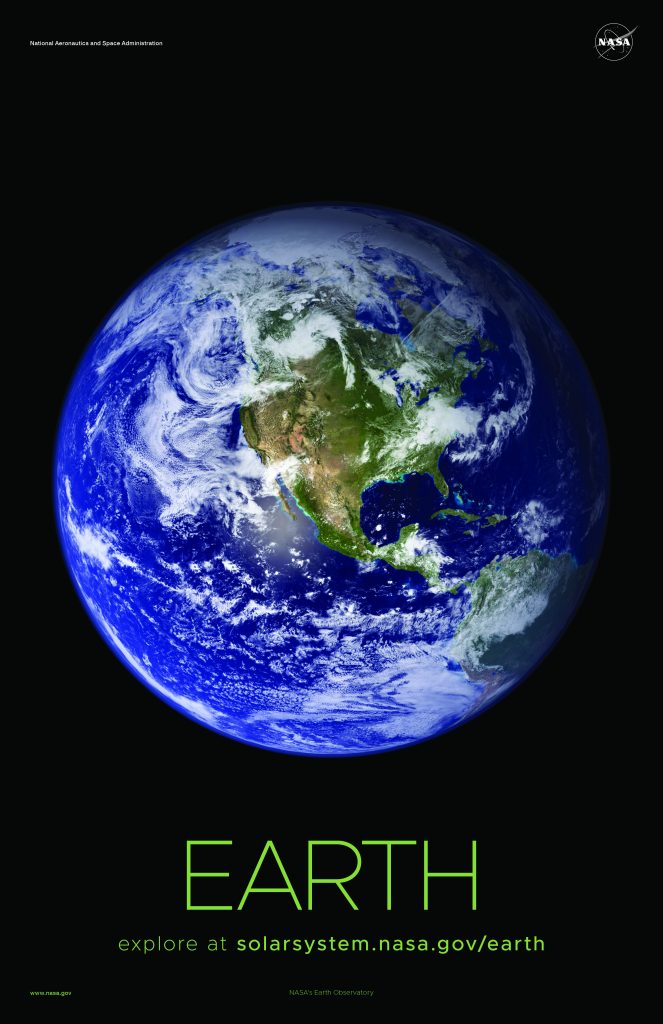The technological developments of the latter half of the 20th century are widely considered to have altered the public’s perception of the Earth. Before space flight, the popular image of Earth was of a green world.
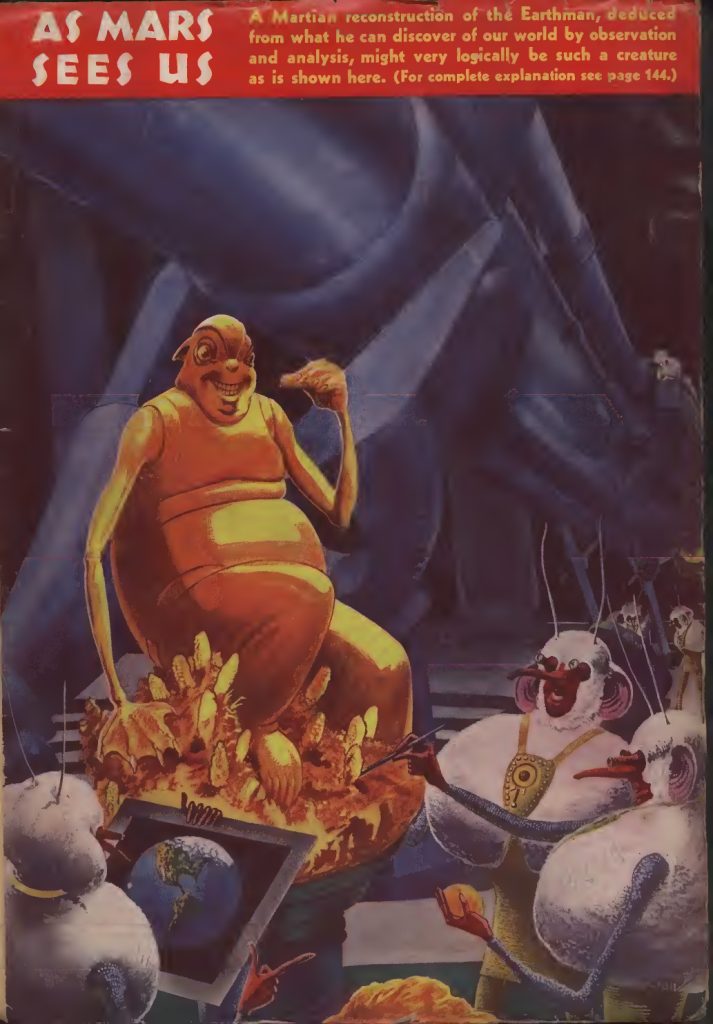
Science fiction artist Frank R. Paul provided perhaps the first image of a cloudless blue planet (with sharply defined land masses) on the back cover of the July 1940 issue of Amazing Stories, a common depiction for several decades thereafter.
Earth was first photographed from a satellite by Explorer 6 in 1959. Yuri Gagarin became the first human to view Earth from space in 1961.
The crew of the Apollo 8 was the first to view an Earth-rise from lunar orbit in 1968, and astronaut William Anders‘s photograph of it, Earthrise, became iconic. Fifty years to the day after taking the photo, Anders observed:
“That photograph, shared globally and always in the public domain, has since served to educate and inspire: The Earth we saw rising over the battered grey lunar surface was small and delicate, a magnificent spot of color in the vast blackness of space. Once-distant places appeared inseparably close. Borders that once rendered division vanished. All of humanity appeared joined together on this glorious-but-fragile sphere.
50 Years After ‘Earthrise,’ a Christmas Eve Message from Its Photographer
“THE BLUE MARBLE” (1972)
THE BLUE MARBLE is a photograph of Earth taken on December 7, 1972, from a distance of around 29,000 kilometers (18,000 miles) from the planet’s surface. Taken by the crew of the Apollo 17 spacecraft on its way to the Moon, it is one of the most reproduced images in history.
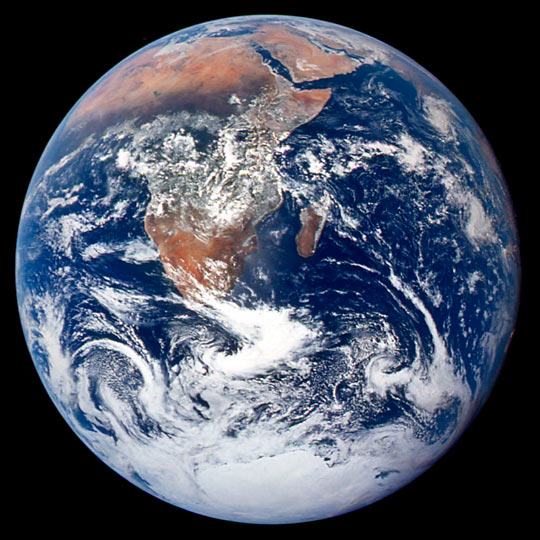
The original caption is reprinted below:
View of the Earth as seen by the Apollo 17 crew traveling toward the moon. This translunar coast photograph extends from the Mediterranean Sea area to the Antarctica south polar ice cap. This is the first time the Apollo trajectory made it possible to photograph the south polar ice cap. Note the heavy cloud cover in the Southern Hemisphere. Almost the entire coastline of Africa is clearly visible. The Arabian Peninsula can be seen at the northeastern edge of Africa. The large island off the coast of Africa is the Malagasy Republic. The Asian mainland is on the horizon toward the northeast. Sensor: Apollo/Apollo. Data Start Date: 12/7/72.
The Blue Marble from Apollo 17 by NASA Johnson Space Center
“THE PALE BLUE DOT” (1990)
PALE BLUE DOT is a photograph of planet Earth taken on February 14, 1990, by the Voyager 1 space probe from a record distance of about 6 billion kilometers (3.7 billion miles, 40.5 AU), as part of that day’s Family Portrait series of images of the Solar System. In the photograph, Earth’s apparent size is less than a pixel; the planet appears as a tiny dot against the vastness of space, among bands of sunlight reflected by the camera.
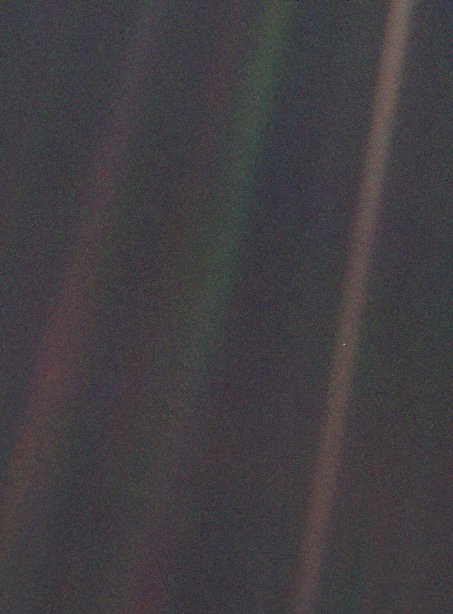
On April 12, 2023, 25 recordings were added to the National Recording Registry, including an audio recording of Carl Sagan’s 1994 reading of “The Pale Blue Dot.”
This brief audio recording of Carl Sagan describes the primary concept of his book Pale blue dot : a vision of the human future in space. In reflecting on the image of the Earth as a tiny speak he notes “that’s us” that the Earth is “a mote of dust, suspended in a sun beam’ and a “very small stage in a vast cosmic arena.”
Few people understood astronomy, planetary science and astrophysics like Carl Sagan, and even less could communicate it in a way that makes us think and feel a deeper connection with it. In 1990, as the space probe Voyager 1 was finishing its final mission, Sagan asked NASA to take a photo of Earth in a wide shot across the great span of space. The photo and concept resulted in Sagan’s 1994 book, “Pale Blue Dot,” and reminds us of the humility of being the only known species in the solar system and beyond. Reading the words is one thing, but hearing the recording, in Sagan’s own voice, really paints the perspective on how vast the universe is and the responsibility of our existence. As Sagan so eloquently speaks, “It has been said that astronomy is a humbling and character-building experience. There is perhaps no better demonstration of the folly of human conceits than this distant image of our tiny world. To me, it underscores our responsibility to deal more kindly with one another, and to preserve and cherish the pale blue dot, the only home we’ve ever known.”
Library of Congress, National Recording Preservation Board, Recording Registry, 2023
THE DAY THE EARTH SMILED
In this rare image taken on July 19, 2013, the wide-angle camera on NASA’s Cassini spacecraft has captured Saturn’s rings and our planet Earth and its moon in the same frame. Earth, which is 898 million miles (1.44 billion kilometers) away in this image, appears as a blue dot at center right; the moon can be seen as a fainter protrusion off its right side. An arrow indicates their location in the annotated version.
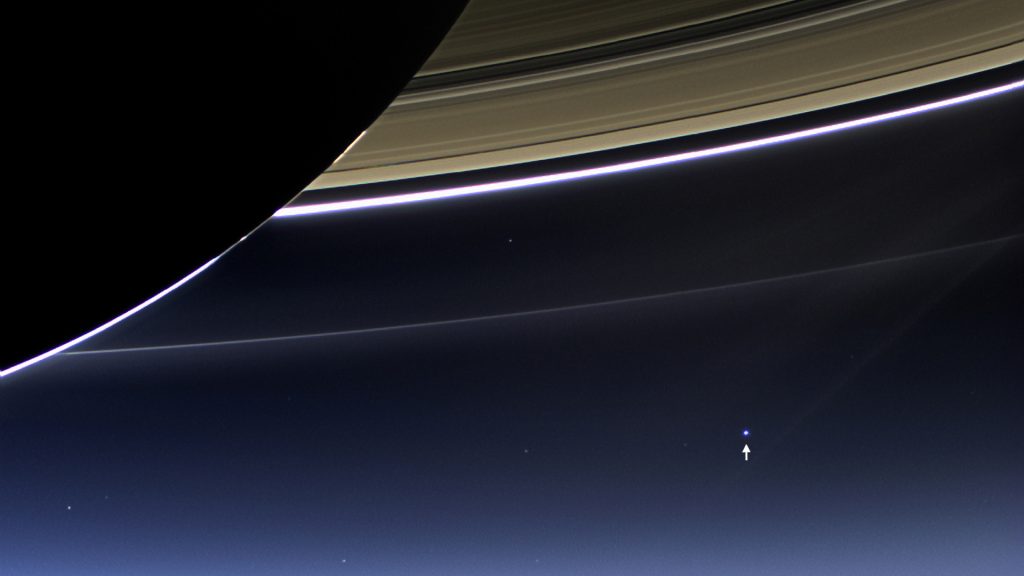
The Cassini imaging team was led by American planetary scientist Carolyn Porco, a co-originator of the idea to take a ‘portrait of the planets’ with the Voyager 1 spacecraft, who participated in the planning, design, and execution of those images in 1990, including the famous Pale Blue Dot image of Earth. This is only the third time ever that Earth has been imaged from the outer solar system, and the first time that inhabitants of Earth knew in advance that their planet was being imaged. That opportunity allowed people around the world to join together in social events to celebrate the occasion.
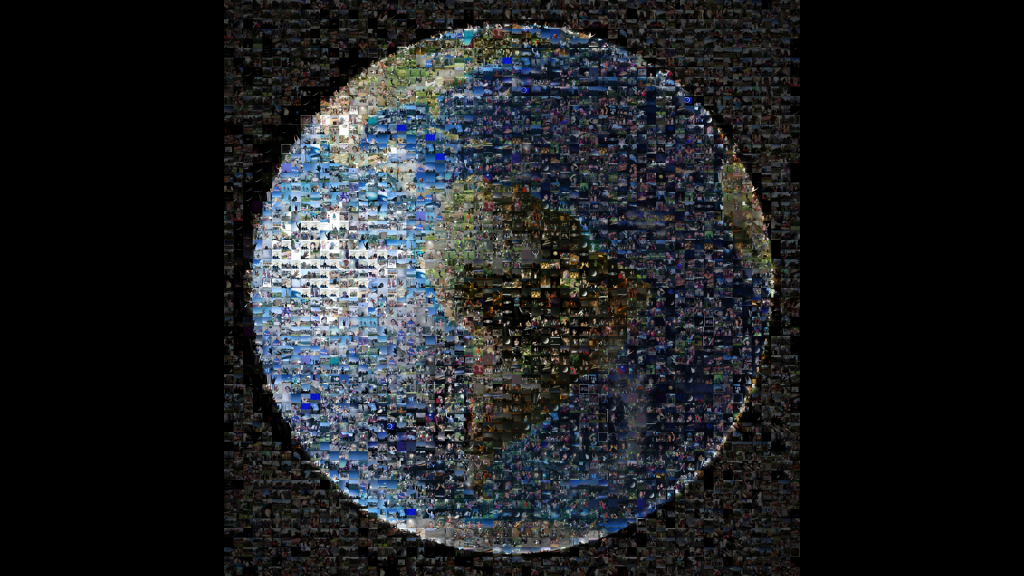
Earth Waves at Cassini From more than 40 countries and 30 U.S. states, people around the world shared more than 1,400 images of themselves as part of the Wave at Saturn event organized by NASA’s Cassini mission. That event on July 19, 2013, marked the day the Cassini spacecraft turned back toward Earth to take our picture as part of a larger mosaic of the Saturn system. The images came via Twitter, Facebook, Flickr, Instagram, Google+ and email. As a tribute to the people of Earth, the mission has assembled this collage from the shared images, using an image of Earth as the base image. Image credit: NASA/JPL-Caltech
MESSAGE IN A BOTTLE on the EUROPA CLIPPER (2023)
NASA’s Message in a Bottle campaign invites people around the world to sign their names to a poem written by the U.S. Poet Laureate Ada Limón. The poem connects the two water worlds — Earth, yearning to reach out and understand what makes a world habitable, and Europa, waiting with secrets yet to be explored. The campaign is a special collaboration, uniting art and science, by NASA, the U.S. Poet Laureate, and the Library of Congress. Join the mission and have your name engraved on NASA’s Europa Clipper spacecraft as it travels 1.8 billion miles to explore Europa, an ocean world that may support life.
An animation representing U.S. Poet Laureate Ada Limón’s “In Praise of Mystery: A Poem for Europa”, featuring Limón’s voice and handwriting. Credit: NASA/JPL-Caltech
The poem is engraved on NASA’s robotic Europa Clipper spacecraft, along with participants’ names that will be etched onto microchips mounted on the spacecraft. Together, the poem and names will travel 1.8 billion miles on Europa Clipper’s voyage to the Jupiter system. Europa Clipper is set to launch from NASA’s Kennedy Space Center in October 2024, and by 2030, it will be in orbit around Jupiter. Over several years, it will conduct dozens of flybys of Jupiter’s icy moon Europa, gathering detailed measurements to determine if the moon has conditions suitable for life.
